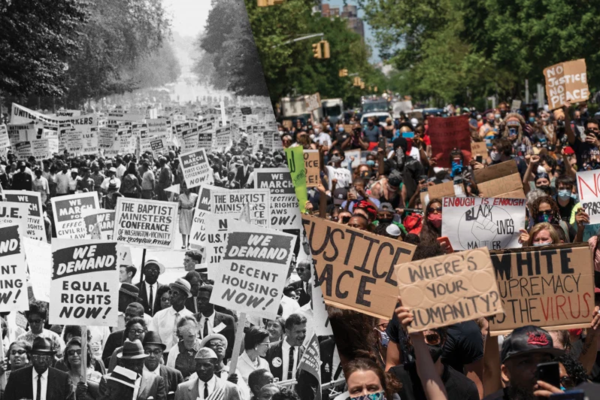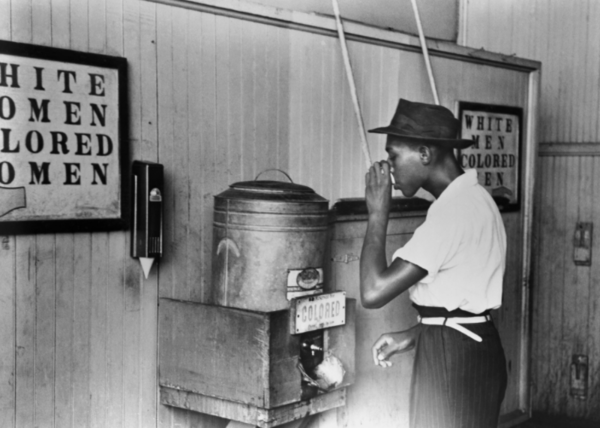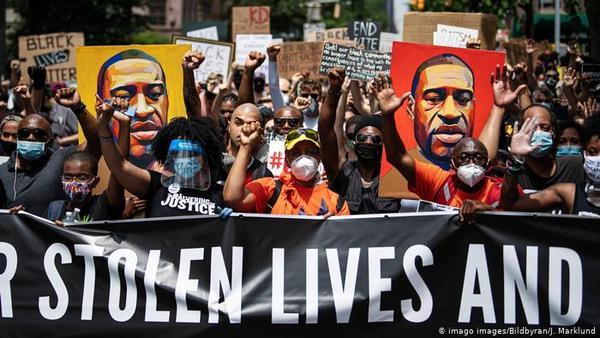 ▲ Striking similarity between peaceful march in 1960s and march for Black Lives Matter in 2020
▲ Striking similarity between peaceful march in 1960s and march for Black Lives Matter in 2020
In 1965, Martin Luther King and crowds of civil rights activists marched from Selma to Montgomery. Fifty-five years later, another group of people, from high school students to even police officers, marched along the streets of Minneapolis.
The Killing of George Floyd and Minessota police brutality sparked something in every human’s heart: the thirst for justice. Millions of people headed out to the streets, each holding a banner that spreads messages about the racial bias evident in the incident. This case has made us look back on racial discrimination around the world, specifically in the U.S. The real question is this: Are things getting better for African Americans in the U.S?
 ▲ African American drinking water from `colored` water fountain
▲ African American drinking water from `colored` water fountain
Enacted in the 19th century, the Jim Crow laws allowed white people to discriminate against African Americans. Everything was segregated back then: toilets, bus seats, schools, and even water fountains. Facilities were not only separated between the two races, but they differed in quality as well - white people’s facilities were noticeably better than African Americans’. Someone had to put an end to this controversial system. Civil rights activists voiced their demand for racial equality by going through boycott and civil disobedience. There were bloodbaths during the process, but their hard work finally paid off. The Civil Rights Act was passed in 1964, followed by the abolishment of Jim Crow laws in 1965, seemingly eradicating systemic racism against African Americans. The law changed, but society didn’t.
Racism against African Americans is still prevalent in various aspects of life, notably in occupation and education. Studies show that African Americans are twice as likely to be unemployed than white individuals. Once employed, they earn nearly 25% less than their white counterparts. Other statistics show that black boys are three times as likely to be suspended than white boys, and black girls are four times as likely to be suspended than white boys - even though African Americans account for only 18% of the students enrolled in schools.
Most of all, among all ethnicities, black Americans are especially vulnerable to police brutality in the U.S. George Floyd isn’t the only innocent black man who was killed by the police. Back in 2014, Mike Brown was found dead on the streets after being shot by a white officer. Witnesses during the incident stated that Brown was unarmed, even holding his hands up in surrender before shots fired. Two other similar events followed, all within four months of each other. However, this is just the tip of the iceberg. Statistics show that black people are three times more likely to be killed by police than white people. According to statista.com, African Americans accounted for 30 percent of unarmed people fatally shot by the police since 2015. Considering that African Americans make up only 14% of the U.S population, this figure is disturbing.
 ▲ Civilians marching on the streets after the George Floyd Incident
▲ Civilians marching on the streets after the George Floyd Incident
“I can’t breathe” - those were Floyd's last words. Or, it could be another innocent civilian’s last word if the action against racial discrimination is not taken seriously. It is our duty as a global citizen to look out for injustice and speak for human rights.
June 30th, 2020
by Soo Min Ko
 ▲ Striking similarity between peaceful march in 1960s and march for Black Lives Matter in 2020
▲ Striking similarity between peaceful march in 1960s and march for Black Lives Matter in 2020 ▲ African American drinking water from `colored` water fountain
▲ African American drinking water from `colored` water fountain ▲ Civilians marching on the streets after the George Floyd Incident
▲ Civilians marching on the streets after the George Floyd Incident
